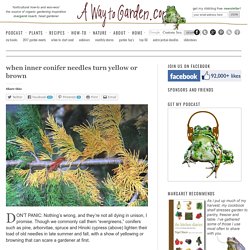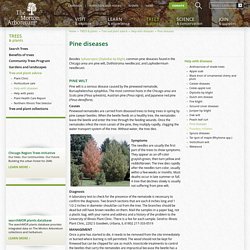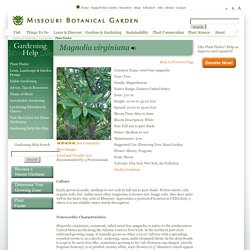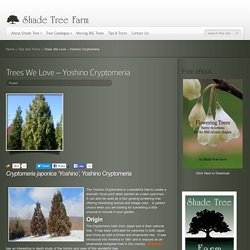

Chamaecyparis obtusa 'Aurea' Golden Hinoki Cypress. The Tree Center(order fr. Mt Meadows❗️) Mountain Meadows Dwarf Conifers Nursery Home page. Below is a list of our Dwarf Conifers available as container stock Some varieties are also available in larger sizes as semi-mature trees balled and burlapped.

Field Stock Pricing & Availability can be found below the Container Price List For information on current and future plant availability, pricing, nursery hours, and purchasing directly from our nursery location: Please call 828-301-2184, send an email to info@mountainmeadowsdwarfconifers.com, mail us at Mountain Meadows Dwarf Conifers, 40 Elkins Branch Road, Weaverville, NC, 28787, or feel free to ask questions using the form on the Contact page. Boxwood Care. Boxwood Cultivars. Boxwood Cultivars. The most important aspect in choosing boxwood cultivars is to select the cultivar that best suits your particular application.

This will allow for better long term success of your planting and reduce the amount of care necessary. Consider use, height, width, exposure, drainage, and soil conditions. Check our Boxwood Care page for tips on planting. Well draining soil is the most important thing for boxwood success. Soil should be rich in microbes which will create the natural nutrient cycle slowly providing nitrogen plus the other 16 elements to the plants. Please contact AJF Design to order our Organically Managed Boxwood.
Boxwood Care. Boxwood Cultivars. Cunninghamia lanceolata glauca. Arizona Cypress (Cupressus arizonica) A high priority for the University of Arkansas Plant Evaluation Program is to identify alternatives to the overused and problem-susceptible redtip photinia (Photinia x fraseri) and leyland cypress (X Cupressocyparis leylandii).

One good example of an alternative to these screen plants is the Arizona cypress (Cupressus arizonica). There is a debate on the proper nomenclature for this group of plants. This is a botanical lumper-splitter type of project. Some experts separate C. arizonica from C. glabra. Other experts lump them and place glabra as a variety of C. arizonica.
There are several reasons why this needle evergreen deserves more attention. The second reason to admire this plant is for its rapid growth. The growth habit on young plants is very similar to our native Eastern red cedar (Juniperus virginiana). Arizona cypress thrives on full sun exposure. Need a cute fact for the next garden party? Boxwood Shrubs - varieties & characteristics. Boxwood Shrubs – varieties & characteristics There are four basic varieties of boxwoods: English Boxwood English boxwood, B. sempervirens ‘Suffruticosa,’ is the most commonly grown cultivar, and it was first cultivated in the early 1700’s in the United States.

It can reach 3 feet in height and usually grows about 1 inch per year. English boxwood is rounded, and the overall shape of the plant is similar to a cloud. American boxwood, also known as common boxwood, is a small tree that grows to 10 feet in height, although some older plants can grow up to 20 feet. When inner conifer needles turn yellow or brown. DON’T PANIC: Nothing’s wrong, and they’re not all dying in unison, I promise.

Though we commonly call them “evergreens,” conifers such as pine, arborvitae, spruce and Hinoki cypress (above) lighten their load of old needles in late summer and fall, with a show of yellowing or browning that can scare a gardener at first. This phenomenon should not be confused with browning at the tips or overall yellowing or browning that can happen at other times—such as from winter desiccation; from the effects of roadside salts; from pests and diseases (including diplodia tip blight in some pines or phomopsis in spruce and non-resistant junipers); or from drought. (See what road-salt damage and winterburn look like by comparison in these photos.)
The browning I noticed in late July on my Eastern red cedar in the front yard (Juniperus virginiana) is suddenly showing up as gold or rusty-brown or a progression from one to the other on many other conifer species. Related January 19, 2009. Beloved conifer: chamaecyparis obtusa ‘crippsii’ THE FINAL (?)

SNOW MELTED OFF THE ‘CRIPPSII’ last week, and from underneath a frosting of silvery-white this most charming of Chamaecyparis, the golden Hinoki falsecypress, showed its gleaming golden self again. Heavenly days. The Morton Arboretum. Besides Sphaeropsis (Diplodia) tip blight, common pine diseases found in the Chicago area are pine wilt, Dothistroma needlecast, and Lophodermium needlecast.

Pine wilt is a serious disease caused by the pinewood nematode, Bursaphelenchus xylophilus. The most common hosts in the Chicago area are Scots pine (Pinus sylvestris), Austrian pine (Pinus nigra), and Japanese red pine (Pinus densiflora). Causes Pinewood nematodes are carried from diseased trees to living trees in spring by pine sawyer beetles. When the beetle feeds on a healthy tree, the nematodes leave the beetle and enter the tree through the feeding wounds. Symptoms. The Morton Arboretum. Evergreen refers to a group of plants that retain their foliage during winter.

Most evergreens have a strong central branch leader, which requires little pruning except to control plant height, increase the density of branching, or to shear into special shapes. Proper identification and growth habits are necessary before pruning or the natural shape and beauty of a plant can be destroyed. Evergreens can be grouped on the basis of whether they have whorled branches (pines, spruces, firs, and Douglas-fir) or random-branching patterns (yew, arborvitae, hemlock, cedar, and juniper). New growth extends from buds that were formed the previous year on the tips of twigs. Pinus thunbergii thunderhead. Spruce, Sherwood Compact Norway. Magnolia virginiana (Bogan rec 4 AL) Common Name: sweet bay magnolia Type: Tree Family: Magnoliaceae Native Range: Eastern United States.

Trees We Love - Yoshino Cryptomeria. Cryptomeria japonica ‘Yoshino’, Yoshino Cryptomeria The Yoshino Cryptomeria is a wonderful tree to create a dramatic focal point when planted as a lawn specimen.

It can also be used as a fast growing screening tree offering interesting texture and foliage color. A perfect choice when you are looking for something a little unusual to include in your garden. Origin. Ilex x 'Emily Bruner' ('Emily Bruner' Holly) (Bogan rec 4 AL) Ilex latifolia (Bogan rec 4 AL) Myrica cerifera: Southern Waxmyrtle (Bogan rec) Edward F. Gilman and Dennis G. Watson2 Introduction Multiple, twisted trunks with smooth, light grey bark, aromatic, olive green leaves, and clusters of grey-blue, waxy berries on female plants which are attractive to wildlife are just some of the reasons southern waxmyrtle is such a popular landscape plant.
Osmanthus x fortunei 'Fruitlandii' 83 Plant Catalogs in a Single Search. Maggrae (Bogan rec 4 AL) Living Fences Evergreen Privacy Screens Living Fence Options. Nellie Stevens Holly Trees.